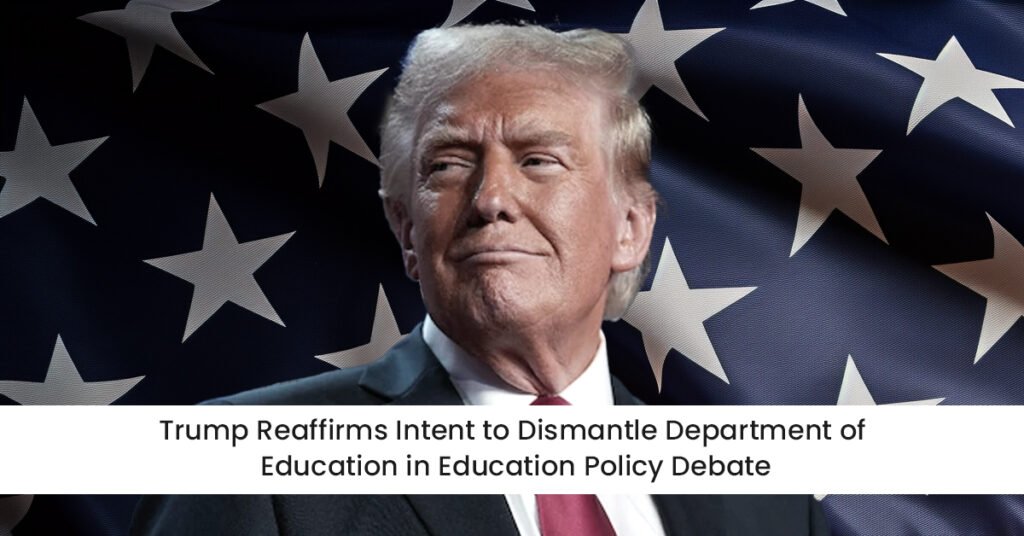Reiterating his intention to close the Department of Education and advocate of state authority over educational policies, President-elect Donald Trump Although it may potentially affect federal money distribution and the application of civil rights in K–12 education, Trump contends that this action will help to lower federal overreach. Officials point out that the federal government would still have major regulatory impact on education even without the department.
Trump’s Constant Attacks on the Department of Education
Established under President Jimmy Carter in 1979, the Department of Education has come under fire from Trump often. He calls the department a bureaucratic tool with minimal significance. Emphasizing the U.S.’s 12th place in world education rankings, Trump contends that excessive investment has not produced desired results.
Trump underlined in a 2023 statement, “We want states to manage the education of our children since they will perform a much better job.” You cannot get worse. Declaring some “hate our children,” he further said that DOE staff members are harmful influences. This captures Trump’s larger campaign theme of less government intrusion.
The Legislative Obstacle of Shutting the Department of Education
Trump’s “Agenda 47” and “Project 2025” programs give closing the DOE top focus. But accomplishing this would need massive legislative support, particularly since Democrats hold a majority in Congress and so a 60- Vote supermajority in the Senate is needed to forward this proposal. Republicans still lack the numbers to close the department, despite recent wins, which fuels internal GOP strife.
Federal Grants and Civil Rights obligations
The DOE now distributes federal money for K–12 education, giving underprivileged children especially important help. With vital programs like Title I and special education depending on government dollars, which make around 14% of total education funding in the United States in 2022. Enforcing civil rights, compiling educational statistics, and handling student loans all depend on the department as well.
Possible Changes to Student Loans and Civil Rights
Should the DOE be destroyed, human rights enforcement in education would go to the Department of Justice, and student loan administration would go to another federal agency, therefore altering the distribution of Pell Grants and other financial aid. Trump has also been outspoken about criticizing current student loan forgiveness rules, probably implying tougher loan restrictions.
Project 2025: An Education Reform Agenda
Supported by the Heritage Foundation and other conservative organizations, Project 2025 calls for abolishing some programs and assigning DOE duties to other agencies. While scaling back safeguards under Title IX, this might slash early education programs like Head Start and lessen funds for Title I, which helps low-income kids.
The Budget for Education: Consequences
With a budget of $238 billion, roughly 2% of the federal government, the DOE mostly supports financial aid for students. Without these resources, educational inequalities—especially those impacting rural and underprivileged urban areas—could get worse.
A GOP Debate With Longstanding Standing
Calls to eliminate the DOE are not novel; former GOP leaders like Bob Dole and Ronald Reagan have shared same objectives. Still, putting such a reform into effect is a difficult and politically taxing chore.
Public Opinion Regarding the Function of the DOE
Public perspective on the DOE is divided. Though Democrats are more supportive, with 59% of Americans seeing the department positively, compared to 27% of Republicans, a Pew Research poll reveals 44% of Americans regard the department favorably. Most agree, nonetheless, that fair access to education is ensured in part by the federal government.
Effects of Closure of the DOE
Closing the DOE might throw off student loan management, civil rights monitoring, and school financing. Turning educational responsibilities to the states could further worsen inequalities since wealthier states would probably manage better than poorer ones in preserving access to and quality of education.

